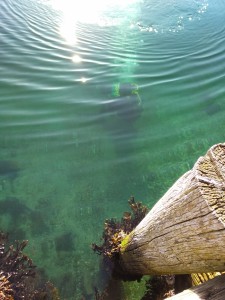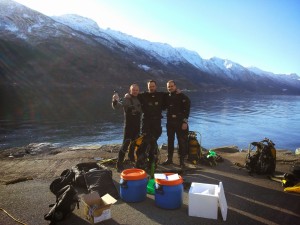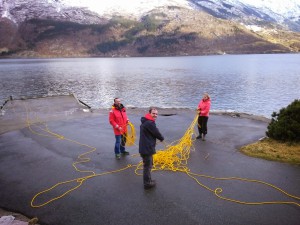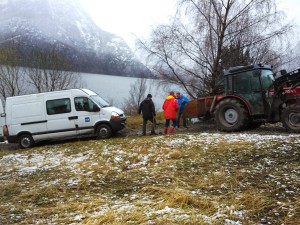Author: Bruno Danis
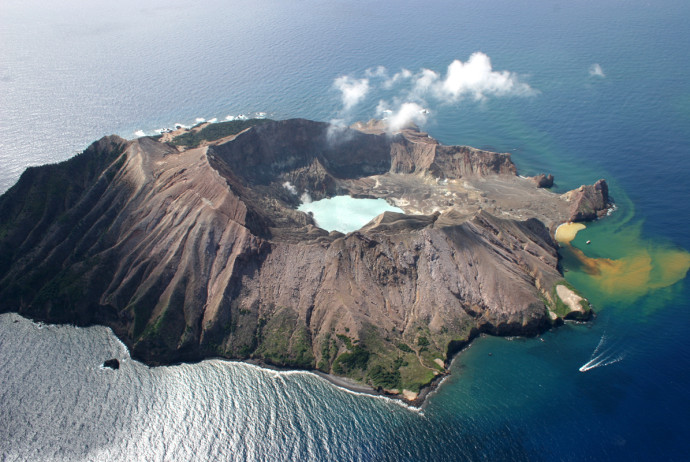
The White Island Blitz
Seawater of the Future?
This post is a press release from the University of Otago related to White Island expedition, to which the Marine Biology Lab of the ULB is participating.
In the first week of December a team of scientists [including Antonio Agüera] from all over the world will descend on Whakatane in the Bay of Plenty. These chemists, biologists, geologists, botanists and marine scientists are planning a “blitz” on the nearby marine volcano: Whakaari or White Island. Their aim: to find out as much as they can about the currents, the water, the algae, and the marine animals as they can in one week. White Island is special because the volcano heats up the water and bubbles carbon dioxide into it, through vents on the flanks of the volcano. This creates a marine environment that is warmer and more acidic than “normal” seawater – the kind of environment that we can expect to see as CO2 in the air is absorbed by the oceans over the next several decades. In effect, it creates Seawater-of-the-Future.
Scientists have been looking at the effects of warming and acidification on plant, animals and even ecosystems in the lab, but there are serious limitations to that kind of study. Having a real-life lab, where animals and plants have lived their whole lives in Seawater-of-the-Future, makes a big difference.
“We need to know more about how this kind of environment varies over time,” says expedition leader Dr. Abby Smith. “We hope to find out where the water is warmest, and where the bubbles make the water the most acid. This work will form the baseline for further studies, and allow scientists to plan their studies better. The best way to find out more about White Island is for us to go there all together.”
The White Island Blitz is being organised through the University of Otago Ocean Acidification Research Theme. Most of the 17 scientists who are coming along are from University of Otago or from the University of Auckland, but there are participants from Australia, Belgium, and the UK as well. This scientific expedition will take place in the first week of December, with fishing boats, divers, snorkelers, and a variety of equipment and samplers going out 48 km offshore to White Island for four days.
On Monday November 30 the Whakatane community and media will have a chance to meet the scientists and hear more about the expedition. And throughout the week a community engagement programme will invite locals, including tourism operators, teachers, and school children to learn more about their marine environment.
For further information contact, [or contact us directly]:
Associate Professor Abby Smith, Department of Marine Science, University of Otago
Chief Scientist of Expedition
Sally Carson, Department of Marine Science, University of Otago
Community Engagement Coordinator for Expedition
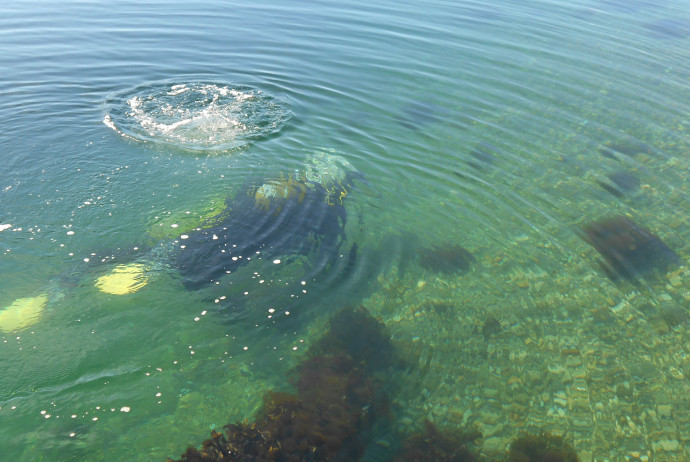
Meet the Team
Staff
The Lab’s Staff include a variety of members, including Academics, Technicians, PostDocs, PhDs a secretary and Master students.
Find more about us by following the links below, or by visiting the lab’s page on Researchgate:
Academics
Philippe Dubois (Head)
Technicians
PhD Students
Postdoc students
Secretary

Research at BIOMAR
Research
The “Marine Biology” (BIOMAR) team of ULB has a long experience in the research field of Antarctic invertebrates, in a range of topics including biochemistry, ecophysiology or impacts of Global Change on benthic ecosystems.
The BIOMAR Marine Biology Lab at ULB carries out its research on the bioecology of marine benthic invertebrates, with a special focus on echinoderms. BIOMAR has accumulated over 40 years of experience in echinoderms biology. Our expertise with this phylum dates back to 1969, when Prof. Michel Jangoux was first recruited under the direction of Prof. Jean Bouillon, a cnidarian specialist.
Since 1989, BIOMAR is closely associated to the marine biology laboratory of the Mons University (UMH), as both were under the supervision of Prof. Jangoux, forming the “Centre Interuniversitaire de Biologie Marine” (CIBIM).
Take a look at our Projects and Publications pages for more details on current research activities.
A review of the Biogeographic Atlas of the Southern Ocean
A review of the Biogeographic Atlas was recently published by John Davenport in Antarctic Science.
Here are a few quotes from the article you can find online.
“The Biogeographic Atlas of the Southern Ocean is a milestone product of 21st century Antarctic Science. ”
“It is an excellent showcase of the value of modern scientific power combined with co-operative and altruistic endeavour. ”
On the other hand, the SCAR Newsletter just published a focus on the Biogeographic Atlas.

Back from the Sørfjord
We’re just back from the Sørfjord, Norway, where we collected a series of samples to monitor the contamination status, and to carry out acidification experiments.
Our teams have been working in the Sørfjord since 1995. The fjord is located in South-West Norway and has two ore smelters at its head. The location is an exceptionally contaminated area, where discharges (Cd, Zn, Cu, Hg, Pb) from metallurgical industry have occurred for more than 80 years. During the mission, we collected sediments, starfish and sea urchins at sites close to each smelter (sites Sl and S2), further downstream (site S3) and outside of the contaminated fjord (site S4). We are now processing the samples to determine the levels of metals in various grain-size fractions from the sediments and different body compartments of the echinoderms.
In parallel, we have carried out a series of tests with our ROV, to ground-truth its usage in the field for habitat mapping and characterisation of benthic communities. This allows us to be ready for field work in harsh conditions in Antarctica, in the framework of the vERSO project.
We also brought back some organisms to the lab to test the influence of different pH on the loss kinetics of contaminants in starfish and on the acid-base physiology and energetics of sea urchins. Work in progress now…

Short news from DDU
The acidification experiment on the sea urchins is now running rather smoothly. An aquarium system has been set up and the Aquatronica material is doing a very good job for controlling the pH. The first results indicate that Sterechinus neumayeri is reacting very quickly to acidification: the acid-base balance of the inner fluid is already controlled after 4 days of progressive decrease of the sea water pH. This supports the hypothesis emitted in our previous work on Antarctic sea urchins and published in Global Change Biology (Collard et al. 2014, GCB doi: 10.1111/gcb.12735 )



